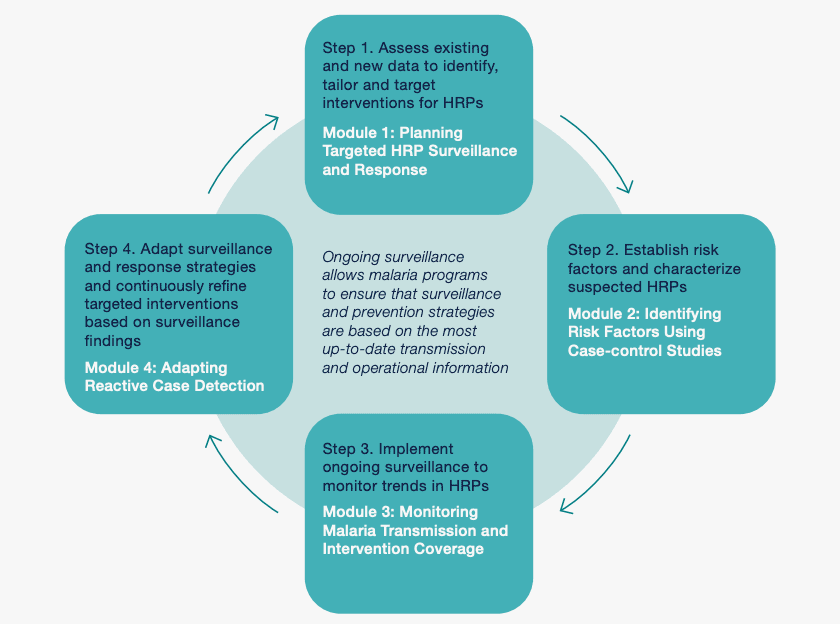High-risk populations
When a country is nearing elimination, its malaria program should investigate and follow up on every malaria case that is reported through its surveillance system. This response must be both rapid and precise in order to prevent malaria from spreading further and to target individuals who are at greatest risk.
As malaria transmission declines, cases increasingly cluster in geographic areas and among populations at higher risk of infection. Implementing targeted surveillance and response interventions in order to close gaps in case reporting, improve intervention coverage and reduce malaria transmission among high-risk populations (HRPs) is a key strategy for malaria elimination. However, most malaria programs rely on passive case detection as the foundation of malaria surveillance. The quality of information in these surveillance systems varies widely and relies on parasitological confirmation of cases as well as prompt reporting and case investigation to determine likely sources of infection. Even where strong passive surveillance systems are in place, they often do not adequately capture specific HRPs who are less likely to present at health facilities or may be absent at follow up. To be effective, surveillance and response strategies must enable equitable access and keep pace with changing transmission patterns.
Leveraging approaches developed to monitor HIV transmission in HRPs, the MEI created the Malaria High-Risk Surveillance and Response Guide to support programs in refining their understanding of HRPs, improving the targeting and tailoring of interventions, and ultimately reducing malaria transmission.
